We all love fluffy small dogs; they are great for cuddling and they make great lap dogs as well, but for people with allergies, shedding those fluffy coats come at a price, not to mention cleaning dog hair off your clothes, carpets and couch isn’t something we technically look forward to. This led me to carry out research on fluffy small dogs that don’t shed or have very minimal shedding.
Here are the Twenty (20) fluffy small dog breeds I found:
- Affenpinscher
- Australian Terrier
- Bedlington Terrier
- Bichon Frise
- Bolognese
- Border Terrier
- Brussels Griffon
- Coton De Tulear
- Dandie Dinmont Terrier
- Havanese
- Lhasa Apso
- Maltese
- Miniature Schnauzer
- Sealyham Terrier
- Shih Tzu
- Scottish Terrier
- Tibetan Terrier
- Poodle (Toy and Miniature)
- Wire Fox Terrier
- Yorkshire Terrier
Affenpinscher
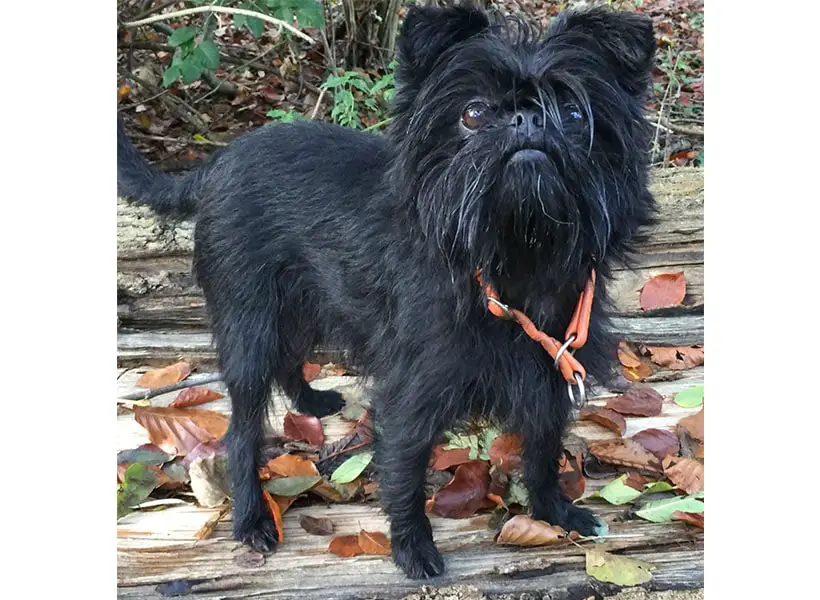
Photo credit @baeretriewers_kaethe on IG
Affenpinschers were originally bred to work like terriers. Affenpinscher, which means ‘monkey-like dog’ in German, having the heritage of being ratters, tend to not do well with other rodent pets such as Hamsters, Gerbils and Ferrets but socialize well with other dogs.
Their coat should be brushed twice a week, first with a regular brush and then a metal brush. They are moderately active and make great apartment dogs. Affenpinschers, like most shorter-faced breeds, suffer difficulty breathing in hotter weathers but are overall a healthy breed.
Australian Terrier
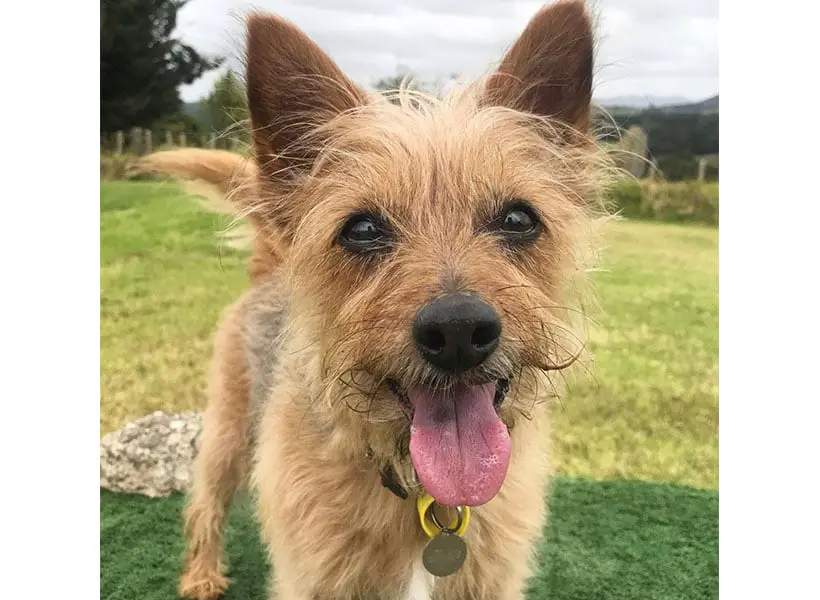
Photo credit @dogdaysnz on IG
Australian terriers were bred to be an all-purpose exterminator, fearlessly going after both mammals and snakes. Although having been bred to work in the remote regions of Australia, they have proven to be loyal, passionate companions to their human owners.
Their coat is weatherproof and can easily repel dirt and mud, making them easy to maintain and groom as brushing them once a week is enough to keep them looking good. It should be noted that too much bathing and shampooing can make their skin dry and should, therefore, be avoided.
Bedlington Terrier
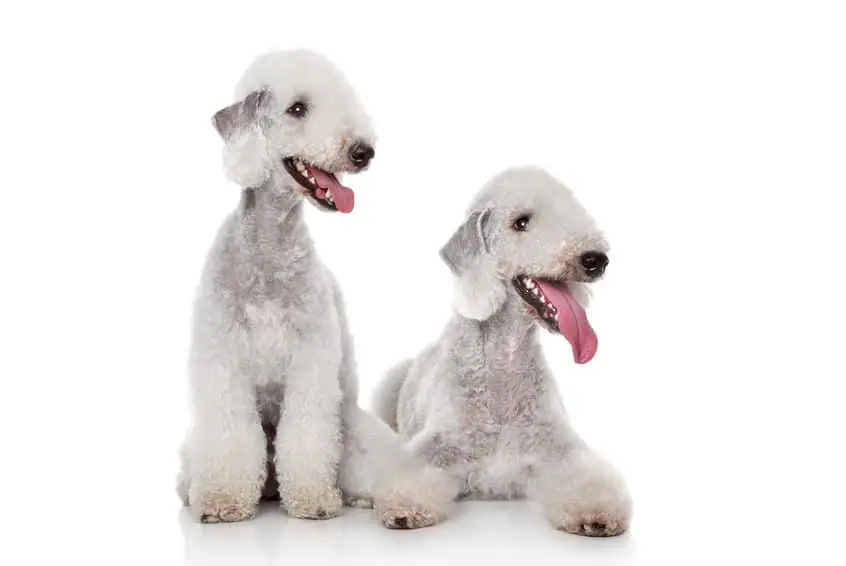
This gentle-looking, fun-loving dog breed was surprisingly bred originally for hunting in England.
Thankfully, they moved from hunting in the field and into our homes when it was discovered they made cuddly companions.
Their curly coats basically never shed but tend to grow quickly and would require it being cut at least every two months and in addition to getting a shave, Bedlington Terriers needs to be brushed once or twice a week to prevent matting. Bedlington Terriers are a healthy small dog breed.
Bichon Frisé

Photo by Matt Briney on Unsplash
Bichons were first discovered in the Mediterranean countries, their resilient personality has ensured their survival over the years, and, through their brief circus stint.
Their loveable features, thankfully, brought them back into our homes and hearts.
The soft coat of the Bischon Frise is considered to be relatively hypoallergenic due to its mild shedding. To help prevent matting, it is advised that they should be brushed every day if possible or three times a week. Bichon Frise also needs to be bathed once every month.
Bolognese
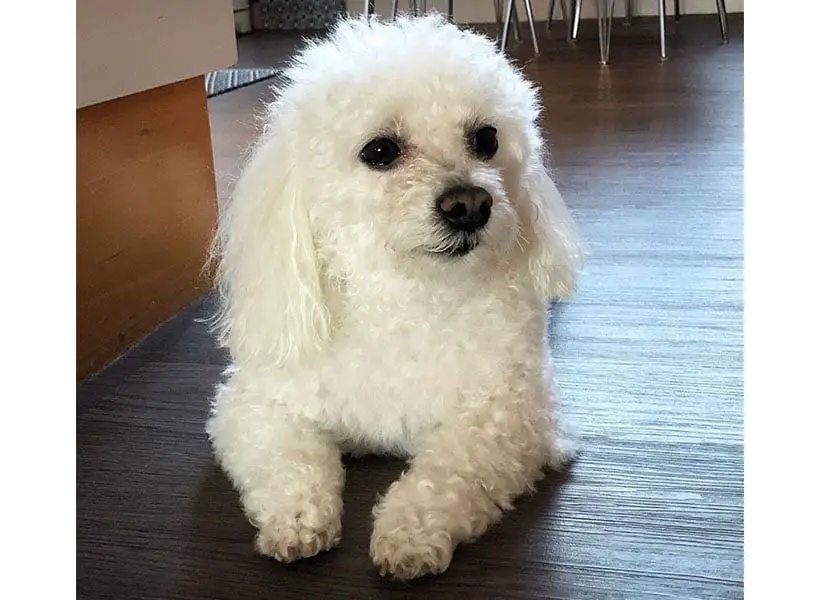
Photo credit @ansj60 on IG
Originating from Bologna in Itay, the Bolognese was once given as gifts to one another by wealthy and powerful people. Bolognese is prone to separation anxiety and won’t do well with people having 9-5 jobs.
On the other hand, they would do well with retirees and seniors because they thrive with companionship.
The white, soft and fluffy coat of the Bolognese, just like the Bichon Frise, needs to be groomed regularly to keep it from matting. For easy maintenance, their coat should be trimmed.
Border Terrier
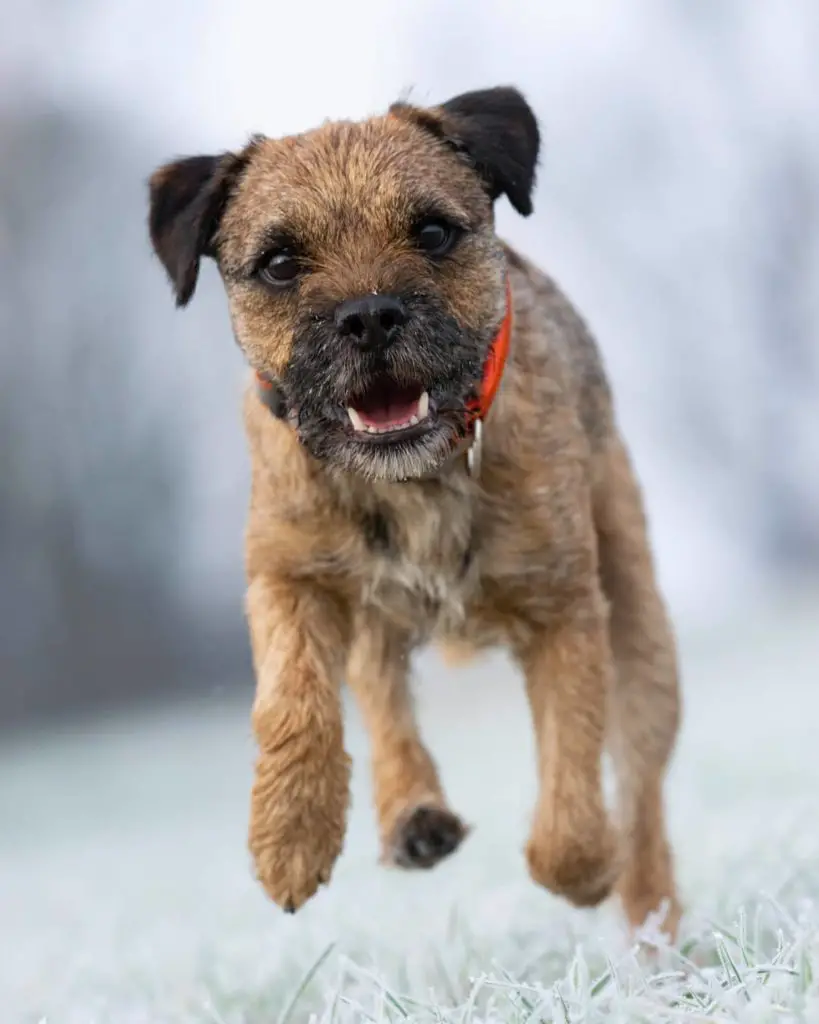
Photo credit @forrest_the_borderterrier on IG
The Border Terrier like most terriers were bred in the hilly country-side of Scottish-English border for working; chasing away foxes and dig through fox lairs. Regardless of their working heritage, Border Terriers are an affectionate and happy small dog breed.
They are double-coated; the outer part is hard and wiry while the inner part is soft and fluffy. They are seasonal shedders like most double-coated dogs.
They should be brushed every week to keep the hair in good shape. Due to the nature of the Border Terrier’s coat, frequent bathing is not advised as it may reduce the efficiency of its dirt repellant.
Brussels Griffon
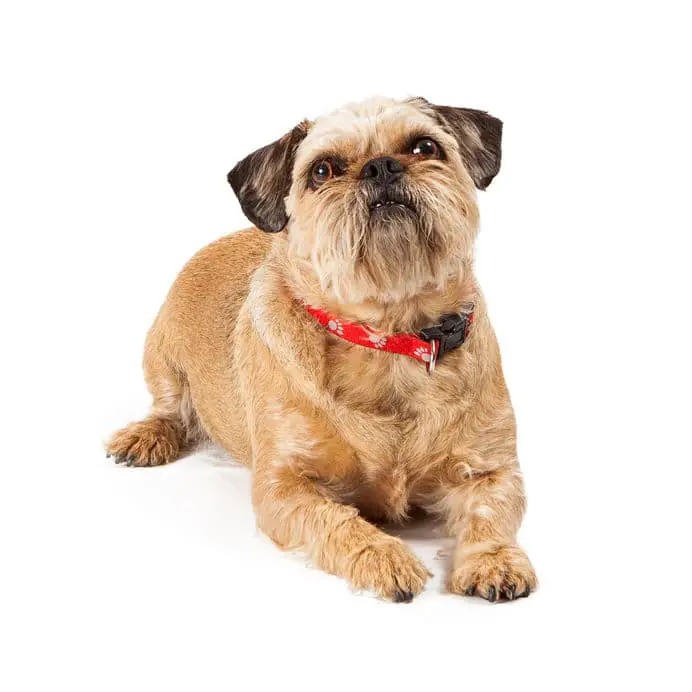
Brussels Griffon originated from Belgium and was bred to be watchdogs and keep out rodents from the stables.
They are well suited for companionship and won’t be suitable for busy, 9-5 working individuals.
They come in two varieties; rough-coated and smooth-coated. The rough-coated Brussels Griffon doesn’t shed, unlike the smooth-coated Brussels Griffon. The Brussels Griffon, just like other short-faced dogs, may experience problems breathing during hot, humid weather and tends to snore.
Coton De Tulear
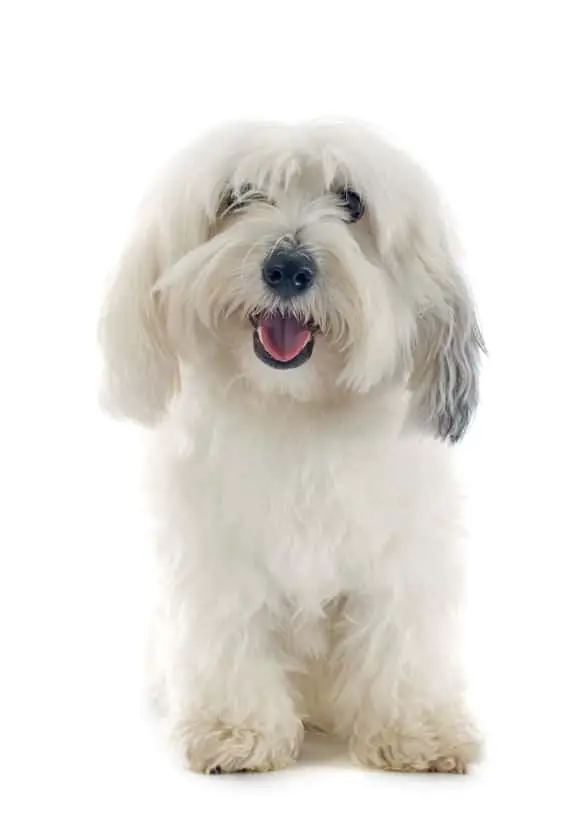
Coton De Tulear originates from Madagascar and in fact, is the official dog of Madagascar. They are charming and make great companions
The coat of the Coton De Tulear should be brushed regularly but gently. A spray conditioner should be used when brushing to avoid breakage.
Dandie Dinmont Terrier
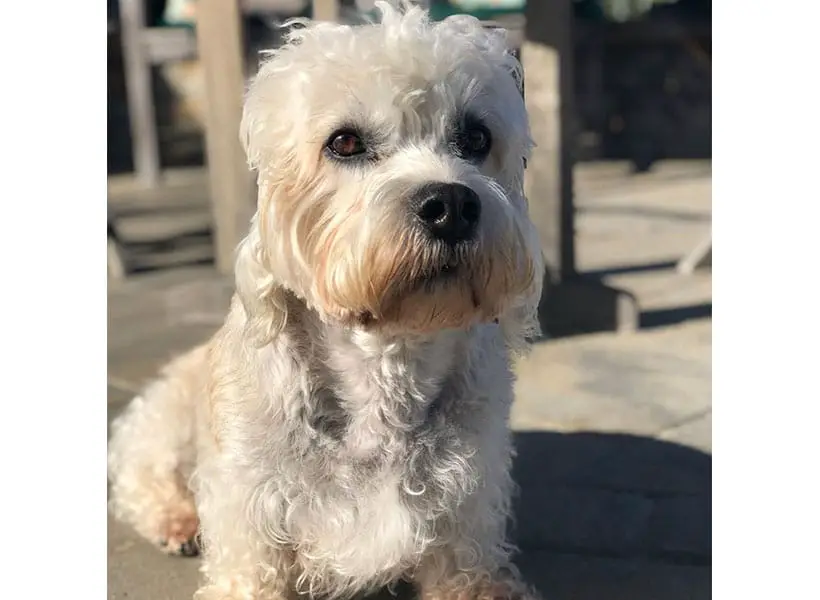
Photo credit @emmie_dandie_boy on IG
Dandie Dinmont Terriers were bred to be exterminator but grew into our hearts, to even being owned and loved by Queen Elizabeth. They are also amazing with Children.
The coat of the Dandie Dinmont Terrier should be brushed daily to avoid it from matting.
Havanese
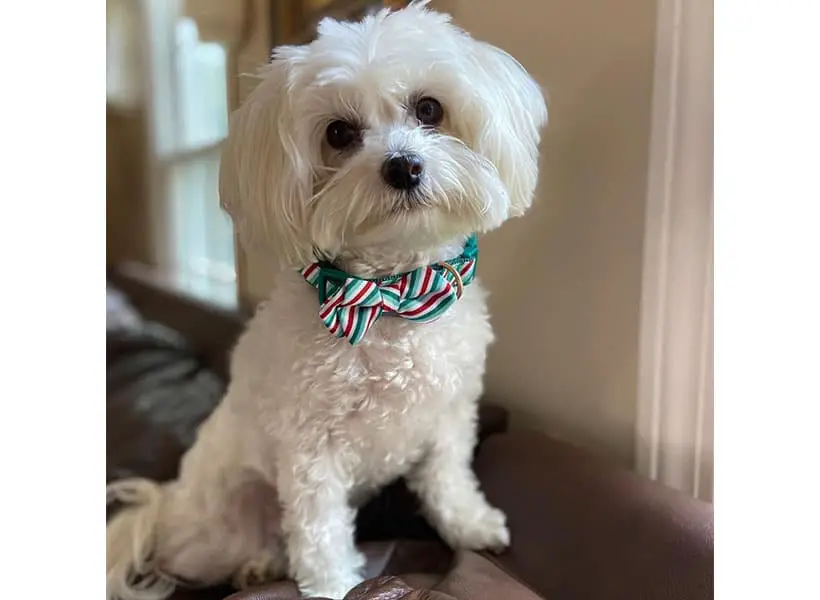
Havanese are especially known for their long, silky coat. Native to Cuba, they were named after the city of Havana. They were so popular with celebrities and royalties.
The long, soft and silky of the Havanese coat should be brushed regularly to keep it mat and tangle-free.
Lhasa Apso
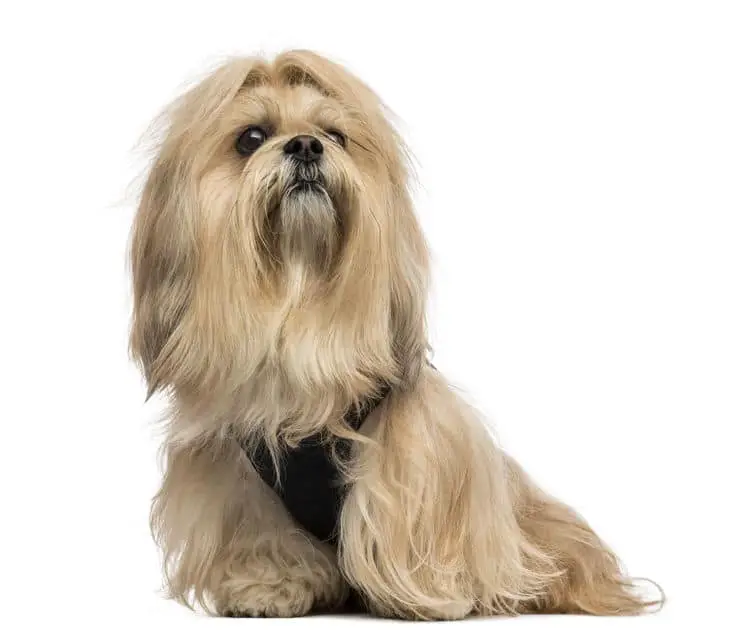
Lhasa Apso, famous for its long, flat-hanging coat, were serving as companions and watchdogs for the monks in Tibetan monasteries for centuries.
It is no surprise they make great companions, seeing they were basically bred to be companions.
The long coat of the Lhasa Apso needs to be brushed regularly using the right tool and proper technique. Using conditioner sprayer makes brushing easy.
Lhasa Apso should be bathed at least once every two weeks and rinsed well because shampoo residue may irritate the skin.
Maltese
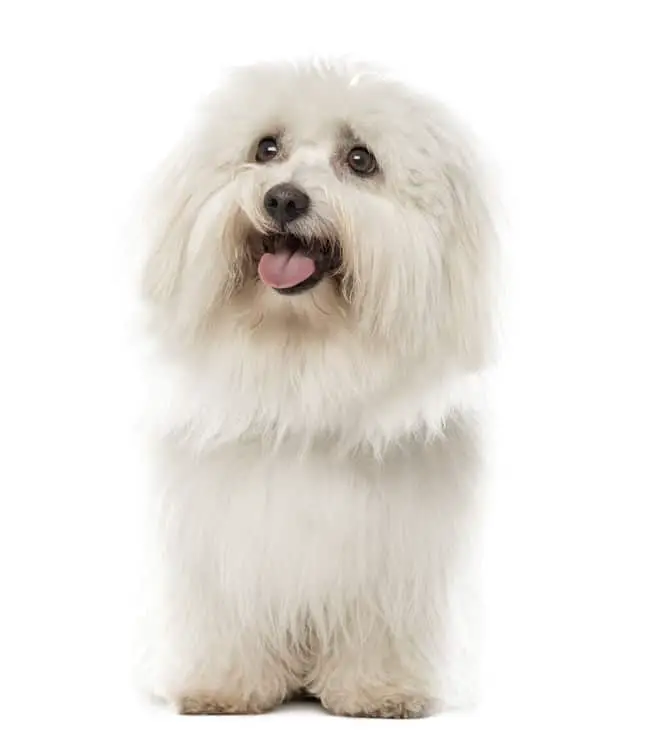
Maltese originates from Mediterranean countries, they were made popular in Malta hence their name Maltese.
They were bred as companions and it has been noted that they were pampered by their owners centuries ago, giving them the tag “pampered pets”.
They, just like Lhasa Apso, have a distinctly long, silky and free-flowing coat that requires regular gentle brushing and combing to prevent matting and tangles.
They should have regular baths and their nails should be clipped regularly because they grow quite fast.
Miniature Schnauzer
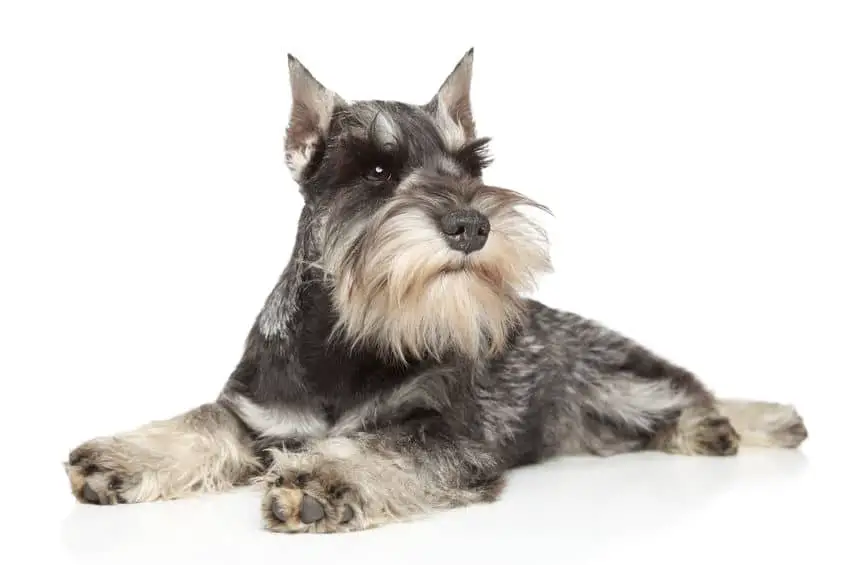
Miniature Schnauzer was bred down from the Standard Schnauzer to be an efficient rat catcher by Old-time German farmers. The ratting days are past and the Miniature Schnauzer is now known for its role as an affectionate companion.
Miniature Schnauzers are double-coated; a wiry top layer with a soft undercoat, which should be brushed once a week.
Sealyham Terrier
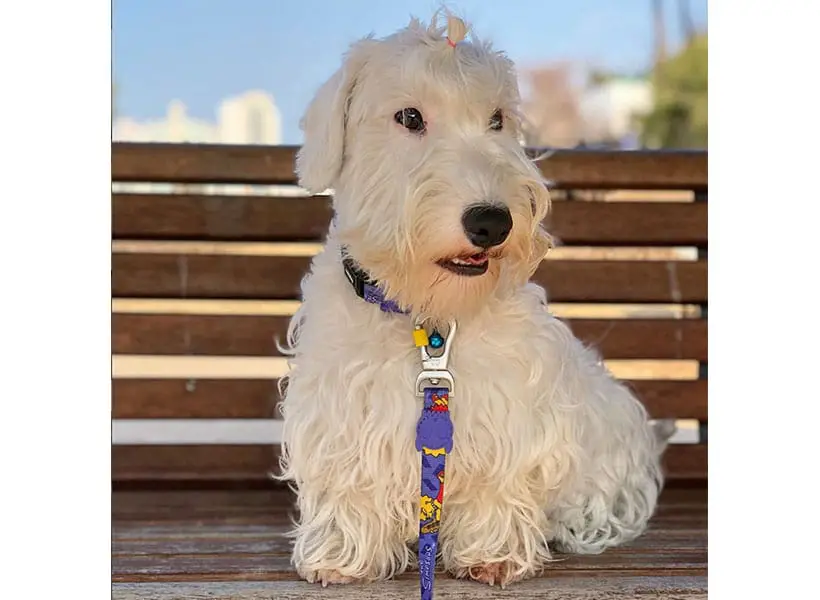
Photo credit @lash__124 on IG
Sealyham Terriers were originally bred to exterminate otters in southwestern Wales. They are strong, fearless and possesses a big dog bark, which makes them an excellent watchdog.
The weather-resistive coat of the Sealyham Terrier has to be combed regularly to prevent matting as they are known to easily mat. Their hair should be trimmed short for easy maintenance and they should be bathed at least every three or four weeks.
Shih Tzu
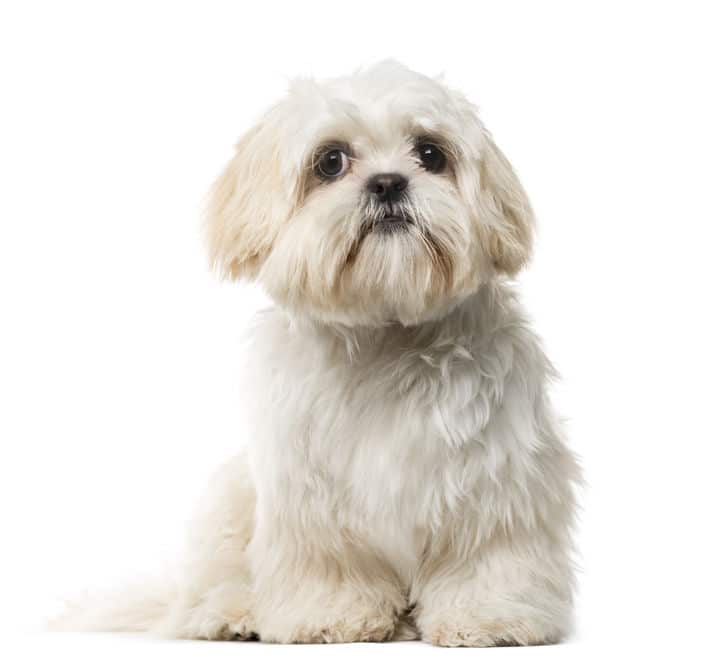
Shih Tzus are said to have originated from China with ancestry of Tibetan breeds.
They are amazing low-energy and affectionate companions that would prefer sitting on your laps while you watch t.v and pamper them.
Shih Tzus sports long, free-flowing coats that require daily brushing with a quality wire brush to prevent matting. They should be bathed three times a week to keep them looking their best.
Scottish Terrier
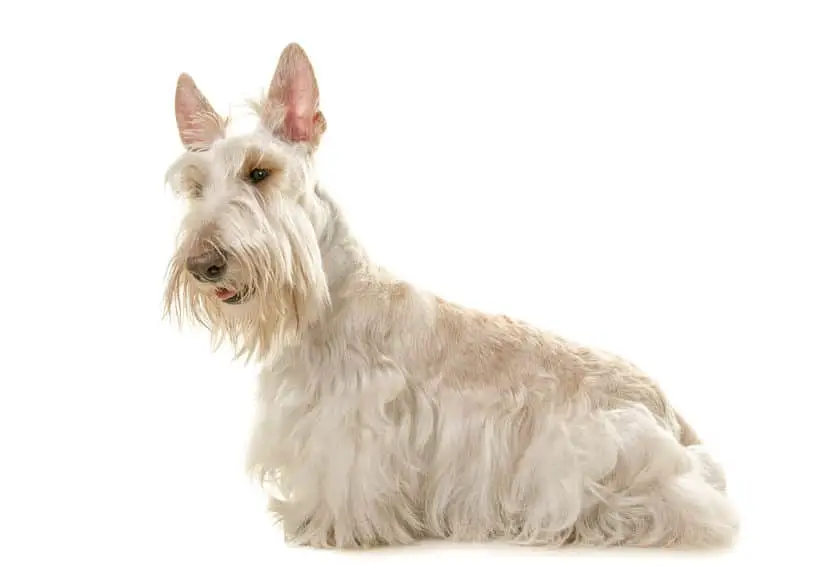
Bred as workers and a fierce hunter, to go after rats, foxes and badgers, the Scottish Terrier originates from Scottland.
They are a double-coated breed, with a wiry, harsh outer layer and dense, soft undercoat. They require frequent grooming and as such can be considered a moderately high-maintenance dog. They would occasionally shed some of their coat but not as frequently to be classified as a shedding dog.
Tibetan Terrier
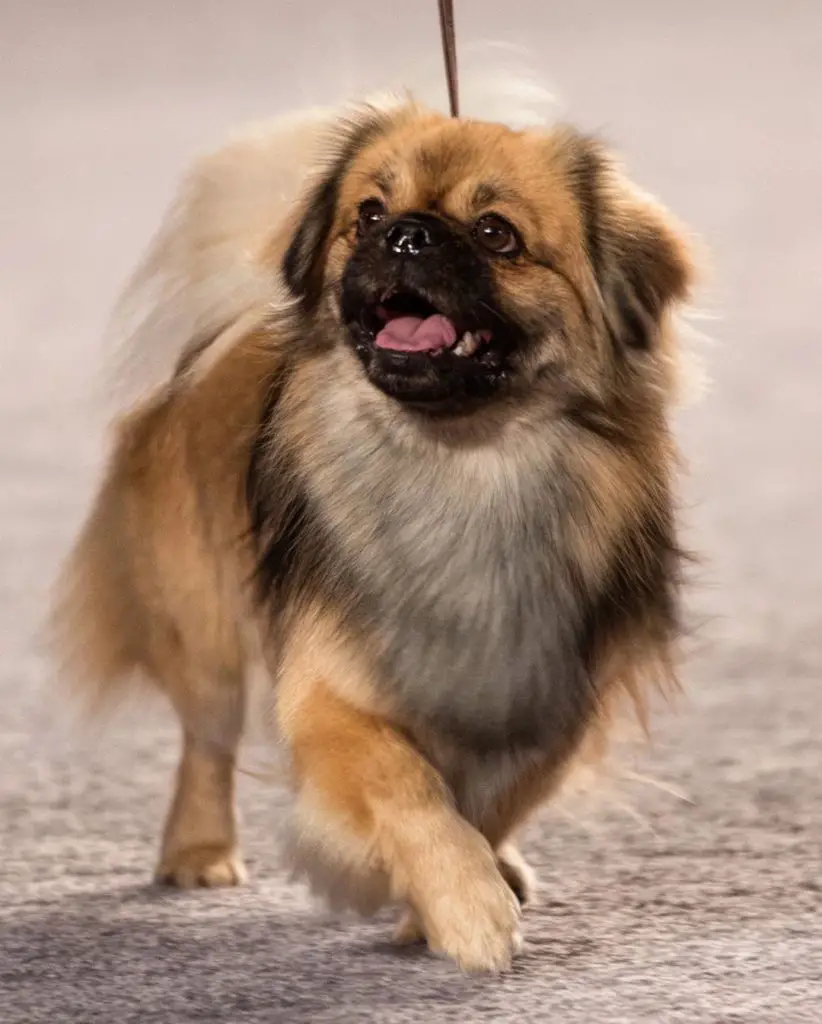
Originating from Tibet and bred in monasteries, the Tibetan Terrier is actually not a Terrier. After being classified at early dog shows in the UK as Lhasa terrier, the terrier name stuck.
They were used as herding dogs for sheep.
The coat of the Tibetan Terrier is long and free-flowing and should be brushed two or three times a week to prevent matting and tangles. A conditioner spray can be used to make it easier to brush.
Poodle (Toy and Miniature)
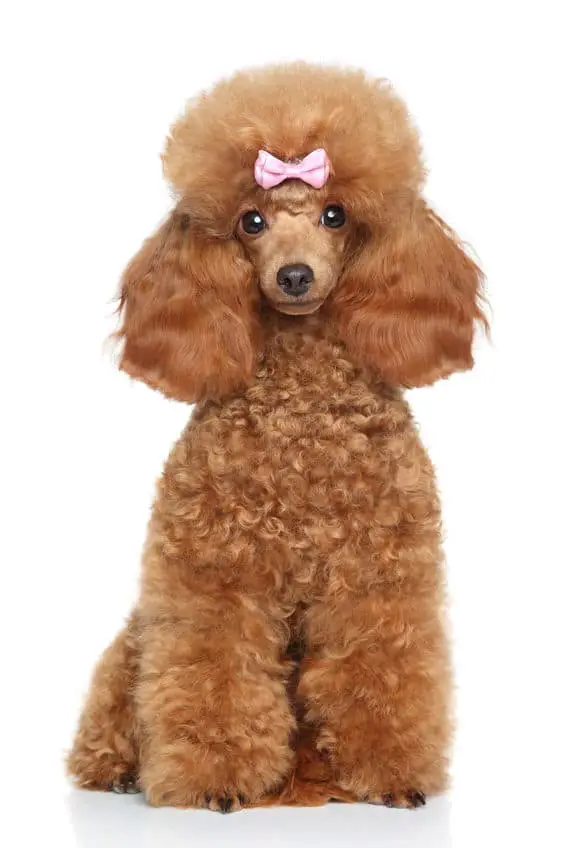
The Poodle originated from Germany and was used in duck hunting.
The Poodle comes in three variants; Standard, Miniature and Toy. The Miniature and Toy variants were bred from scaling down the standard variant, this in no way makes them a lesser breed variant.
The coat of the poodle requires extra attention. For easy maintenance, the coat should be cut in a short trim to able easy brushing. If you insist on letting the coat grow longer, you will need to learn how to brush the coat.
The poodle’s coat is prone to matting and needs to be brushed daily from the skin.
Wire Fox Terrier
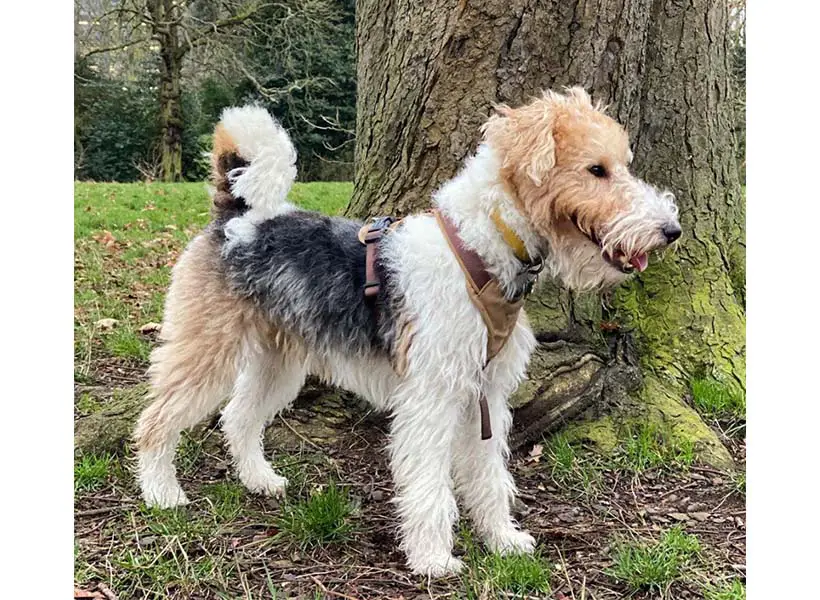
Photo credit @bertie.the.gentleman on IG
As their name implies, the Wire Fox Terrier was bred to chase foxes out of their lair while the huntsmen hunted them. With the boundless energy they possess, Wire Fox Terriers are reliable for people that love to take long walks and get quite active.
The coat of the Wire Fox Terrier requires regular brushing to prevent it from matting.
Yorkshire Terrier

Photo credit @murphy__the__yorkie on IG
Earning their mark as a great working ratter in mines, the Yorkshire Terrier has its origin from the northern English counties of Yorkshire.
Becoming pets in the late Victorian era, they won their way into our hearts.
The Yorkshire Terrier has a long and free-flowing coat that needs to be brushed daily if it is to be kept long. This would prevent it from matting and tangling. They should be bathed every week.
In conclusion, it is nice to know some small dog breeds can sport long, free-flowing, fluffy, silk and wool-like coats and still remain hypoallergenic. This makes them great snuggle and cuddle companions.
Keeping your dog clean and healthy can go along way to keep them hypoallergenic and safe.

